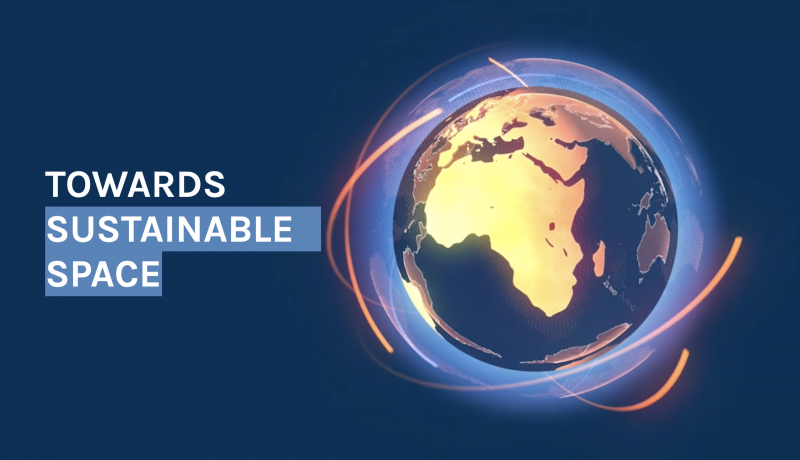

Image via ESA.
Originally published January 22, 2021, by the European Space Agency (ESA).
For the first time ever, a telecommunications satellite has used an iodine propellant to change its orbit around Earth.
The small innovation could help to clear the skies of space junk, by enabling tiny satellites to self-destruct cheaply and easily at the end of their missions by steering themselves into the atmosphere where they would burn up.
EarthSky lunar calendars are available now! We’re guaranteed to sell out. Get one while you can!
The technology could also be used to boost the mission lifetime of small CubeSats that monitor agricultural crops on Earth or entire mega-constellations of nanosats that provide global internet access, by raising their orbits when they begin to drift toward the planet.
The technology was developed by ThrustMe, a spin-off company from the École Polytechnique and the French National Centre for Scientific Research (CNRS), and supported by ESA through its program of Advanced Research in Telecommunications Systems (ARTES).
It uses a novel propellant – iodine – in an electric thruster that controls the satellite’s height above Earth. Iodine is less expensive and uses simpler technologies than traditional propellants.
Unlike many traditional propellants, iodine is non-toxic and it is solid at room temperature and pressure. This makes it easier and cheaper to handle on Earth.
When heated, it turns to gas without going through a liquid phase, which makes it ideal for a simple propulsion system. It is also denser than traditional propellants, so it occupies smaller volumes onboard the satellite.
ThrustMe launched its iodine thruster on a commercial research nanosat called Spacety Beihangkongshi-1 that went into space in November 2020. It was test fired earlier this month before being used to change the orbit of the satellite.

Graphic via ThrustMe.
Bottom line: A commercial research nanosat called Spacety Beihangkongshi-1 – launched November 2020 – has used an iodine thruster to change its orbit around Earth. This new thruster might help clear space junk from Earth orbit, by steering small satellites, at the end of their missions, back into Earth’s atmosphere where they’d burn up.
from EarthSky https://ift.tt/39Z285j


Image via ESA.
Originally published January 22, 2021, by the European Space Agency (ESA).
For the first time ever, a telecommunications satellite has used an iodine propellant to change its orbit around Earth.
The small innovation could help to clear the skies of space junk, by enabling tiny satellites to self-destruct cheaply and easily at the end of their missions by steering themselves into the atmosphere where they would burn up.
EarthSky lunar calendars are available now! We’re guaranteed to sell out. Get one while you can!
The technology could also be used to boost the mission lifetime of small CubeSats that monitor agricultural crops on Earth or entire mega-constellations of nanosats that provide global internet access, by raising their orbits when they begin to drift toward the planet.
The technology was developed by ThrustMe, a spin-off company from the École Polytechnique and the French National Centre for Scientific Research (CNRS), and supported by ESA through its program of Advanced Research in Telecommunications Systems (ARTES).
It uses a novel propellant – iodine – in an electric thruster that controls the satellite’s height above Earth. Iodine is less expensive and uses simpler technologies than traditional propellants.
Unlike many traditional propellants, iodine is non-toxic and it is solid at room temperature and pressure. This makes it easier and cheaper to handle on Earth.
When heated, it turns to gas without going through a liquid phase, which makes it ideal for a simple propulsion system. It is also denser than traditional propellants, so it occupies smaller volumes onboard the satellite.
ThrustMe launched its iodine thruster on a commercial research nanosat called Spacety Beihangkongshi-1 that went into space in November 2020. It was test fired earlier this month before being used to change the orbit of the satellite.

Graphic via ThrustMe.
Bottom line: A commercial research nanosat called Spacety Beihangkongshi-1 – launched November 2020 – has used an iodine thruster to change its orbit around Earth. This new thruster might help clear space junk from Earth orbit, by steering small satellites, at the end of their missions, back into Earth’s atmosphere where they’d burn up.
from EarthSky https://ift.tt/39Z285j

Aucun commentaire:
Enregistrer un commentaire